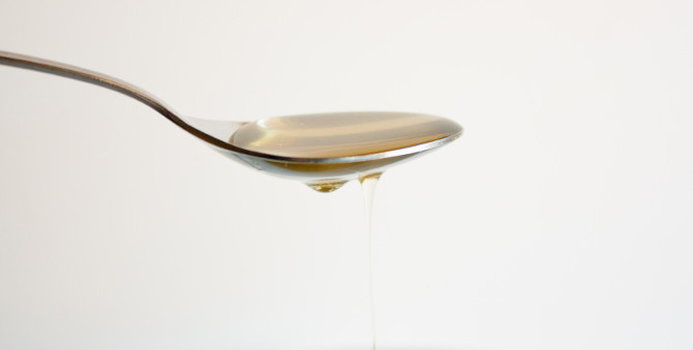Agave nectar has been heralded as a natural alternative to sugar, but is it a better option to use in your food?
Also called agave syrup, this sweet nectar is derived of sap from the agave plant. It was boiled down into thick syrup in a process similar to the method used to make maple syrup. Today, however, it is processed and refined by treating the sugars with heat and enzymes, which can destroy the beneficial effects of the plant. The end product is a processed syrup, instead of a minimally processed sweetener.
Agave syrup is made up of two carbohydrate molecules: glucose and fructose. These are the same molecules that make up sucrose (or table sugar), but in a different ratio. Table sugar is about half glucose and half fructose, while agave is closer to 70% fructose and 30% glucose, depending on the brand.
Fructose is commonly referred to as "fruit sugar," because fructose is found in fruit and other plant foods. When we think of it as fruit sugar, fructose seems benign. But keep in mind that when we consume these naturally occurring sugars in fruit, they are delivered into the gut with many other nutrients like fiber that aren't present when you use a processed concentrated sweetener. Fiber affects the rate of digestion, and therefore the rate of absorption of sugar. By slowing digestion, sharp blood sugar spikes and falls can be avoided. This benefit is already built into whole fruit, which is high in fiber; when sugars are extracted from natural sources, we single out the least beneficial nutrient to consume on its own.
There are differences between glucose and fructose: glucose is the molecule measured in blood sugar, and is the preferred energy source for cells in the body. It is essential, and our bodies can make it if needed. Fructose is not absorbed directly into the blood stream like glucose; instead, it travels to the liver to be digested. It is converted to glucose or stored as fat if consumed in excess. Fructose is controversial, as some studies have shown a link to insulin resistance, fatty liver, and high cholesterol. These potential side effects need to be studied more extensively, and would not be caused with occasional use; rather, it is excess use that may lead to these effects.
Because fructose does not have the immediate effect on blood sugar like glucose does, it has a low glycemic index, which is an indication of a food's effect on blood sugar compared to glucose. In this way, fructose and fructose-based sweeteners may be a better option for diabetics.
In terms of calorie content, sugar contains 16 calories per teaspoon, while agave contains 21 calories per teaspoon. But agave is sweeter than sugar, so it's possible to use less.
The most notable difference in the two sweeteners is the state in which they are found. Sugar is found in solid form, while agave is a liquid. Therefore, agave may be easier to mix into cold drinks (agave is used often in cocktails), while either dissolves easily in coffee or tea.
If you are searching for a sugar alternative, agave syrup may be an option if you prefer the taste, however, it is not necessarily a healthier, more natural option.
Five Ways to Avoid Eating While Drunk
Carolyn McAnlis, RDN, is a Registered Dietitian Nutritionist who has a special interest in preventing chronic disease through nutrition. She graduated from Syracuse University with a Bachelor of Science in Nutrition Science & Dietetics and a minor in Psychology. After completing a full-time dietetic internship at the University of Virginia Health System, she has developed a passion for convincing others that healthy food can be delicious through her blog A Dietitian in the Kitchen.




